| |
|
|
53.
| Alif |
| |

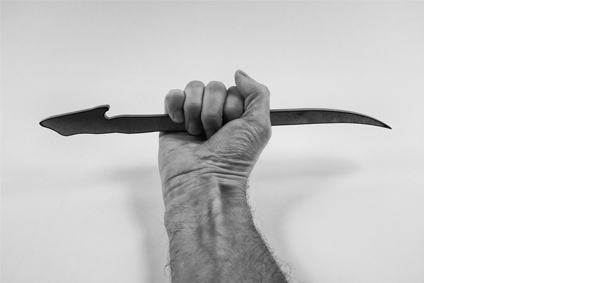
2015, Black and white ink on baryté paper 50x75 cm and 30cm x 45cm.
Exhibition view of Survival Signs, Jane Lombard Gallery 2017, New York.
Courtesy of the artist and Jane Lombard Gallery, New York.
Ed. of 5 + 2 A.P.
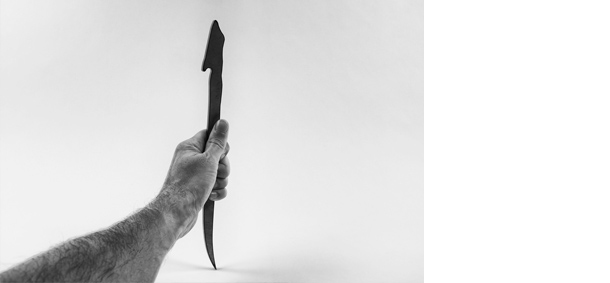
2015, Black and white ink on baryté paper 50x75 cm and 30cm x 45cm.
Exhibition view of Survival Signs, Jane Lombard Gallery 2017, New York.
Courtesy of the artist and Jane Lombard Gallery, New York.
Ed. of 5 + 2 A.P.
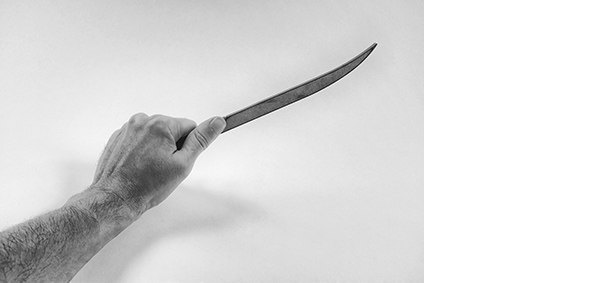
2015, Black and white ink on baryté paper 50x75 cm and 30cm x 45cm.
Exhibition view of Survival Signs, Jane Lombard Gallery 2017, New York.
Courtesy of the artist and Jane Lombard Gallery, New York.
Ed. of 5 + 2 A.P.
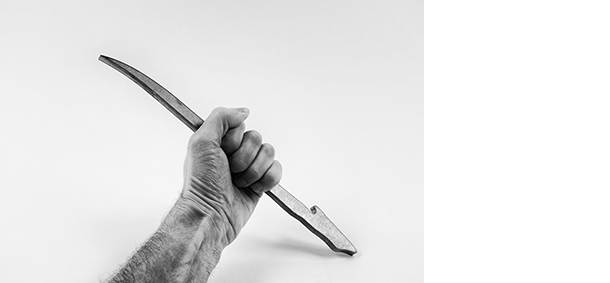
2015, Black and white ink on baryté paper 50x75 cm and 30cm x 45cm.
Exhibition view of Survival Signs, Jane Lombard Gallery 2017, New York.
Courtesy of the artist and Jane Lombard Gallery, New York.
Ed. of 5 + 2 A.P.
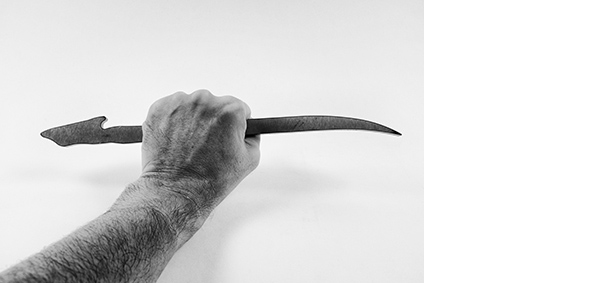
2015, Black and white ink on baryté paper 50x75 cm and 30cm x 45cm.
Exhibition view of Survival Signs, Jane Lombard Gallery 2017, New York.
Courtesy of the artist and Jane Lombard Gallery, New York.
Ed. of 5 + 2 A.P.
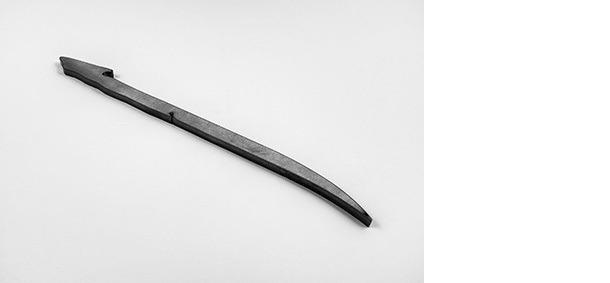
2015, Black and white ink on baryté paper 50x75 cm and 30cm x 45cm.
Exhibition view of Survival Signs, Jane Lombard Gallery 2017, New York.
Courtesy of the artist and Jane Lombard Gallery, New York.
Ed. of 5 + 2 A.P.
'' Each photograph bears the title Alif, the first letter of the Arabic alphabet, which is always written unattached to any subsequent letters. In Fatmi’s series of photographs, the letter serves a variety of purposes,
as religion and language itself always do. By isolating the letter, Fatmi shows how it can be used to disrupt communication as much as facilitate it. ''
The Brooklyn Rail, October 2017
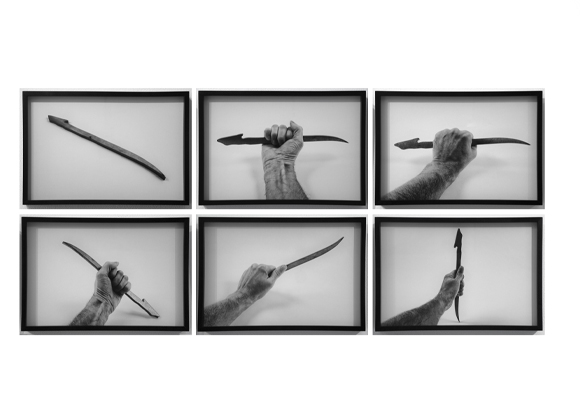
Alif
Exhibition view of Survival Signs, Jane Lombard Gallery 2017, New York.
Courtesy of the artist.

Alif
Exhibition view of 180° Behind Me, Göteborgs Konsthall, 2018, Göteborg.
Courtesy of the artist and Ceysson & Bénétière, Paris.
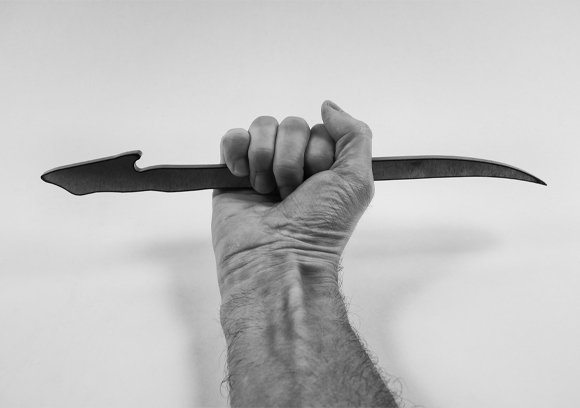
Alif
Courtesy of the artist.
|
|
|
|
|
|
Alif est une œuvre photographique en noir et blanc montrant l’avant-bras d’un homme serrant dans sa main une forme légère courbe et allongée, tel un poignard. Cette série de clichés commencée en 2015 est un work in progress qui doit se développer sur un ensemble de photographies, de vidéos et d’installations.
Cette forme longiligne appelée Alif, est la première lettre de l’alphabet arabe. La lettre Alif présente des caractéristiques particulières, notamment le fait qu'elle fasse partie des 6 lettres dites "non liées, ou Les lettres isolées ", c'est-à-dire qu'elle n'est jamais attachée à la lettre qui la suit.
Dans la calligraphie arabe la lettre Alif est le module, c’est-à-dire l’élément premier en fonction duquel la taille des autres caractères est proportionnée. Ainsi, sa valeur dans la numération arabe est le Un, qui est aussi le chiffre de la grâce du bien-aimé, mais aussi le symbole d’Allah, le dieu unique.
Lorsque le Coran fut transmis au prophète Mohamed en langue arabe, cela lui donna le statut de langue divine. C'est pourquoi la tradition islamique donne une place essentielle à la science des lettres. Cette recherche a été mené depuis l'avènement de l'islam par des hommes comme Ibn-Arabi, Ibn-Khaldoun, ou Al-Buni. Ce dernier disait : « Le alif est une lettre rectrice, les autres lettres ont été engendrées par lui. Il est leur ange. Il est l'équivalent de l'Intelligence, de la Science, du Trône, de la Tablette... La totalité des significations des lettres est contenue dans le alif qui est une synthèse des synthèses ». Les poètes arabes ont souvent proclamé qu’ils n’avaient appris qu’une lettre, le Alif. Elle est en effet plus importante que tout l’alphabet réuni : connaître l’unicité et l’unité de Dieu prime sur la connaissance des choses visibles de ce monde. De plus, Le Alif, se retrouve dans toutes les autres lettres. Ainsi, le Hha’ n’est autre qu’un Alif courbé et le Mim, un Alif circulaire.
Dans ces photographies, le Alif prend la figure d’un outil primitif, brut, à l’aspect tranchant. Sa pointe, particulièrement aiguisée, captive et donne aux clichés une atmosphère violente. On peut envisager cette œuvre comme une synthèse du travail de l’artiste qui se situe à la frontière entre la beauté et la violence, souvent comme sur le fil du rasoir.
Studio Fatmi, Decembre 2016.
|
|
Alif is a black and white photographic piece that shows a man’s forearm, grasping a slightly curved and elongated shape in his hand like a dagger. This series of photographs began in 2015 and is a work in progress that is to be developed on a set of photographs, videos, and installations.
This slender shape known as the Alif, is the first letter of the Arabic alphabet. The letter Alif has particular characteristics, namely that it is one of the six so-called “unrelated letters” or “isolated letters,” which means that it is never attached to the letter that follows.
In Arabic calligraphy, the letter Alif serves as the guide. It is the main element that defines the proportions of the other characters. Thus, its value in Arabic numeration is One, which is also the figure of grace of a beloved, and the symbol of the one God, Allah.
When the Qur’an was transmitted to the Prophet Muhammad in Arabic, it was given the status of a divine language. This is why the science of letters is given such importance in Islamic tradition. Since the advent of Islam, men like Ibn-Arabi, Ibn-Khaldoun, or Al-Buni have carried out this study. Al-Buni said, “The Alif is a letter of authority, and it has engendered all other letters. It is their angel. It is the equivalent of Intelligence, Science, the Throne, the Tablet... The Alif contains the totality of significations of letters. It is a synthesis of syntheses.” Arab poets have often proclaimed that they have learned only one letter: The Alif. It is indeed more important than the entire alphabet combined. Knowing the uniqueness and unity of God takes precedent over the knowledge of the visible things of this world. Moreover, the Alif is found in all other letters. The Hha’ is nothing but a curved Alif, and the Mim, a circular Alif.
In these photographs, the Alif takes the form of a crude, primitive tool with a sharpened edge. Its particularly sharp peak captivates and gives a violent quality to the images. One can imagine this piece as a synthesis of the artist’s work that, like the edge of a razor, sits between beauty and violence.
Studio Fatmi, December 2016.
|
|
|
|